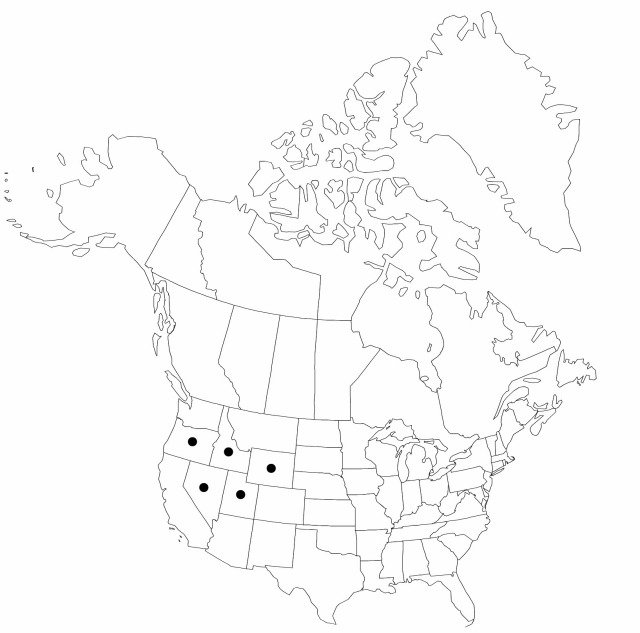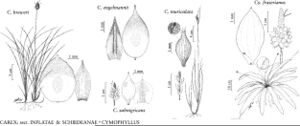Carex subnigricans
Leafl. W. Bot. 2: 167. 1939.
Rhizomes 1–1.5 mm thick. Culms 5–20 cm, 2–2.5 mm thick at base. Leaves: sheaths to 13 cm, fronts uniformly colorless or pale brown; blades with inconspicuous median groove, not flattened, terete in cross section, 5–12 cm × 0.4–10 mm, lacking conspicuous air cavities. Inflorescences 0.7–2 cm × 4–6 mm, staminate portion to 5 mm. Pistillate scales yellow-brown medially, 1-veined, equaling perigynia in width, usually shorter, apex obtuse or acute, not inrolled, awns absent. Anthers 1.5–2 mm. Perigynia veinless, stipitate, elliptic, 2.5–3.5 × 1.5 mm, tightly enclosing and distended by achene, base narrowly cuneate, apex acute; beak erose; rachilla shorter than fruit. Stigma 1.5–2.5 mm. Achenes sessile.
Phenology: Fruiting Sep.
Habitat: Moist rocky slopes, alpine meadows
Elevation: above 2500 m
Distribution

Idaho, Nev., Oreg., Utah, Wyo.
Discussion
Selected References
None.
